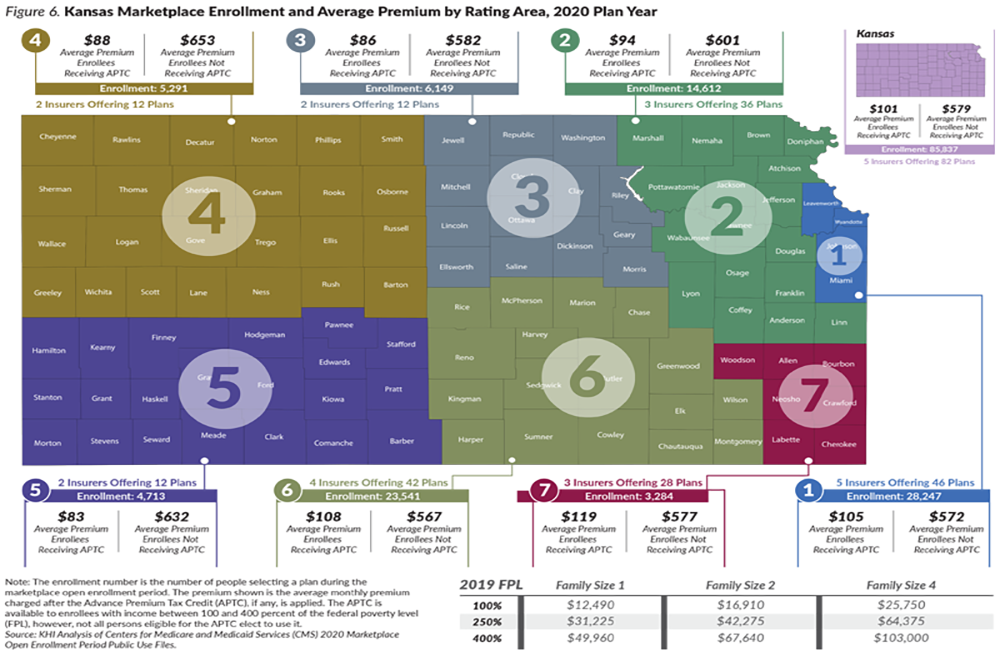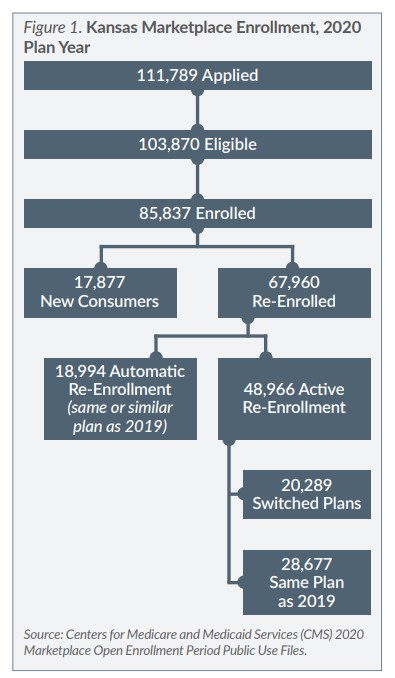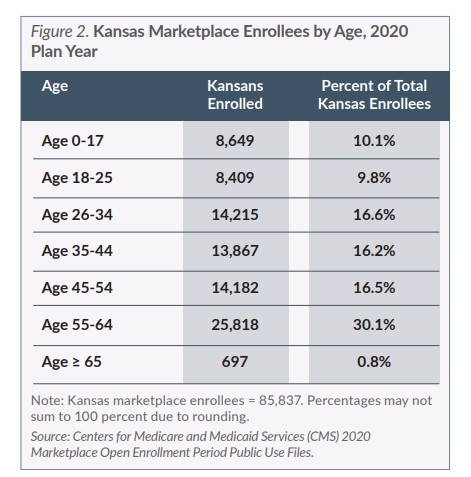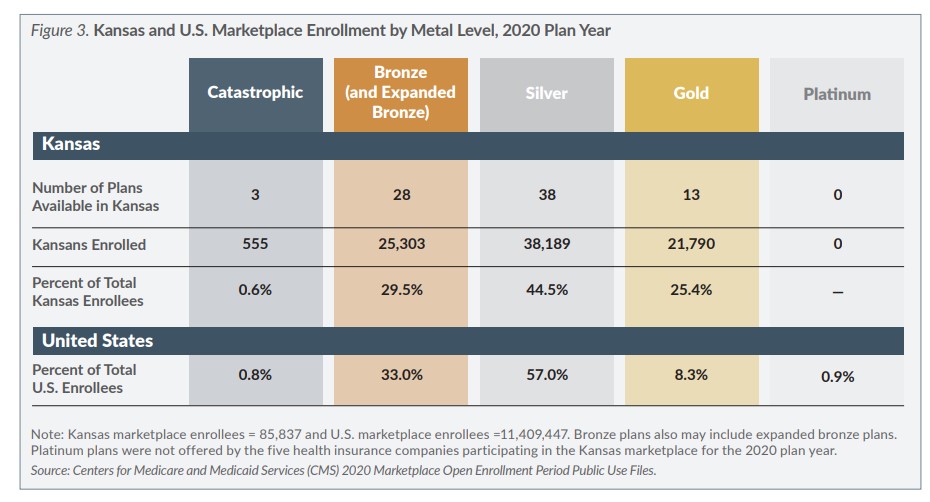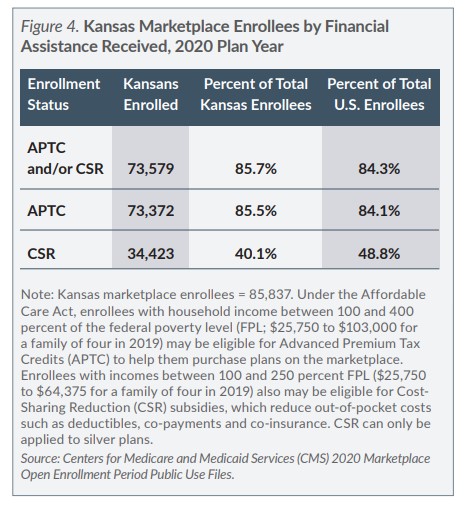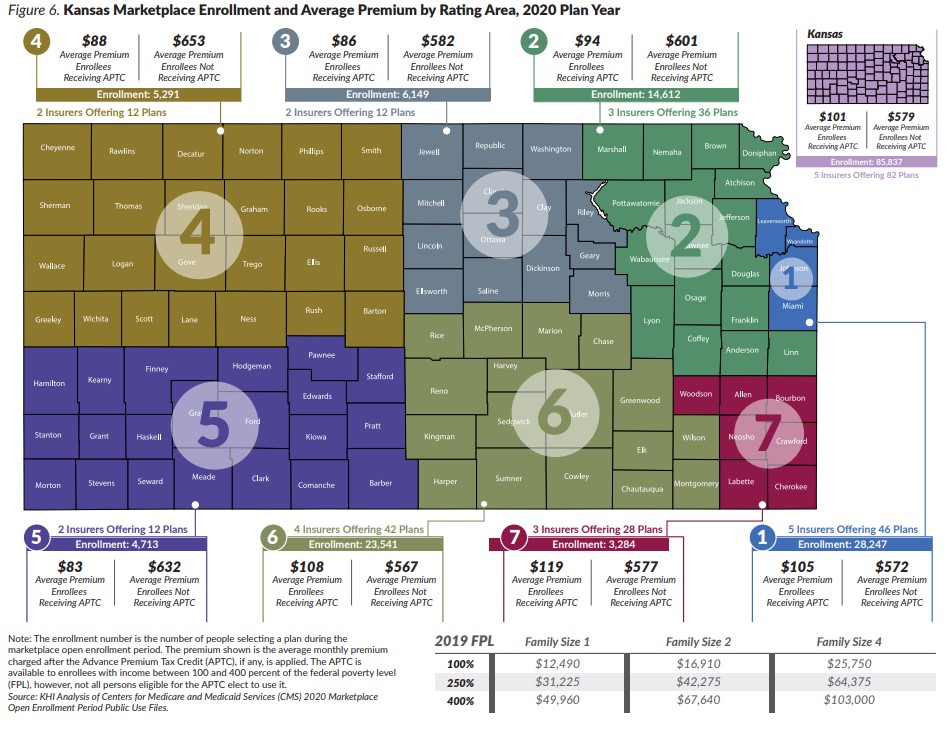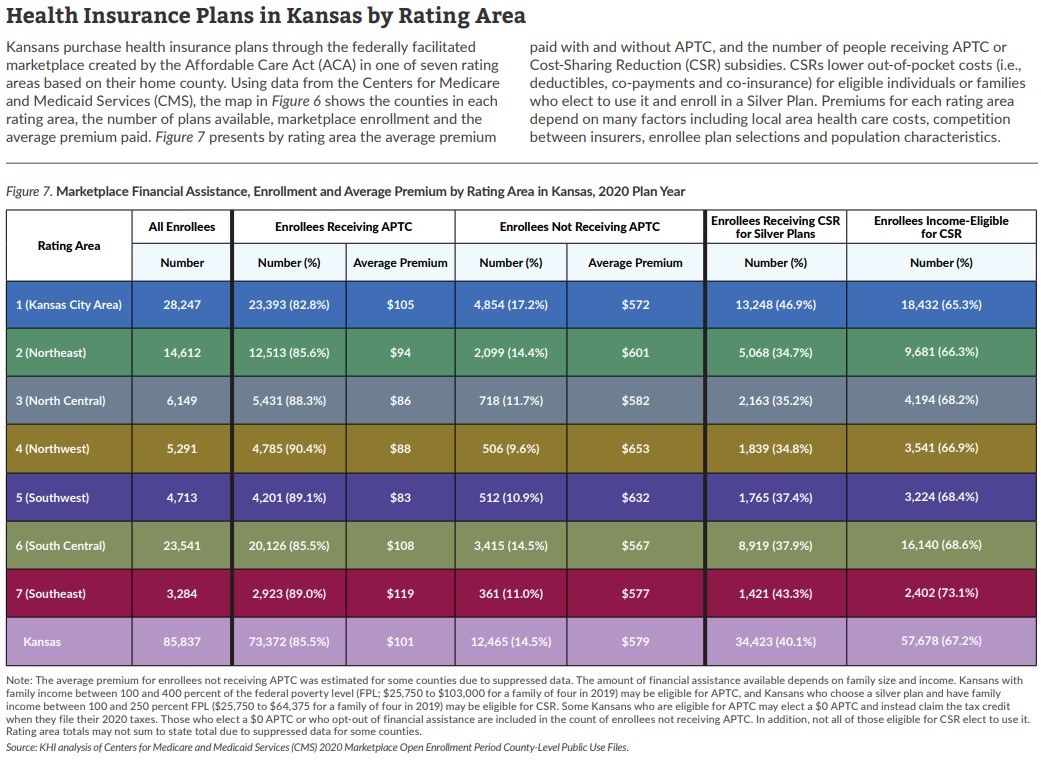Introduction
During the latest open enrollment period at the end of 2019, 85,837 Kansans selected or were automatically re-enrolled in a health insurance plan through the federally facilitated marketplace. That is 4,156 fewer than the previous year and a 15 percent drop from the 101,555 who selected a plan in 2016. Around the country, 11.4 million consumers selected a marketplace plan in 2020, the same as last year and a 10 percent drop from the 12.7 million in 2016. Enrollment is likely to increase during 2020 following large losses in the availability of job-based insurance due to the COVID-19 pandemic.
This brief, which is based on the latest available data from the Centers for Medicare and Medicaid Services (CMS), a federal agency within the U.S. Department of Health and Human Services (HHS), provides data on enrollment, enrollee characteristics, plan selection, financial assistance, premiums and stand-alone dental insurance in Kansas. CMS released its final summary enrollment data for the marketplaces created by the Affordable Care Act (ACA) on April 2, 2020, for plan year 2020. Like last year, the open enrollment period for the 2020 plan year lasted 45 days from November 1, 2019, through December 15, 2019, for coverage beginning on January 1, 2020. However, the enrollment period was extended until December 18, 2019, for consumers who could not sign up on December 15, which fell on a Sunday.
